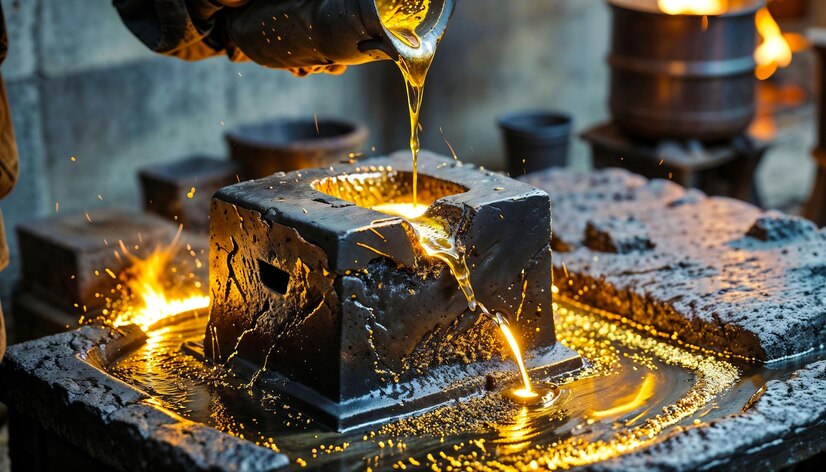Over-molding has evolved from a simple process to a sophisticated manufacturing technique, enabling the creation of complex and high-performance products. This section explores some of the most innovative over-molding techniques that are reshaping industries.
Overmolding has evolved from a simple process to a sophisticated manufacturing technique, enabling the creation of complex and high-performance products. This process, which involves molding one material onto an existing substrate, has become instrumental in industries ranging from automotive to consumer electronics.
By combining the properties of different materials, over-molding offers unparalleled design flexibility and functional enhancements. Let’s explore how innovative techniques are pushing the boundaries of this process.
Advanced Material Combinations
Conductive Over-Molding: Integrating conductive materials like liquid metal or conductive polymers into the overmold layer to create products with electrical or thermal conductivity. This is particularly useful in electronics and wearable technology.
Biocompatible Over-Molding: Combining medical-grade plastics with biocompatible materials to produce implants, prosthetics, and medical devices with enhanced functionality and patient comfort.
Smart Material Over-Molding: Incorporating materials with responsive properties, such as shape memory alloys or thermochromic materials, into the overmold to create products with adaptive capabilities.
Enhanced Design and Functionality
Multi-Shot Over-Molding: Injecting multiple materials sequentially into a mold to create intricate and multi-functional components with varying properties, colors, and textures.
In-Mold Decoration (IMD): Integrating decorative elements like patterns, graphics, or textures directly into the overmold during the die casting manufacturers in China process, eliminating the need for secondary decoration steps.
Structural Over-Molding: Combining rigid and flexible materials to create components with both structural integrity and flexibility, such as automotive parts and consumer electronics.
Technological Advancements
Laser-Assisted Over-Molding: Using laser technology to precisely control the application of the overmold material, enabling complex patterns and improved adhesion.
Micro-Injection Over-Molding: Producing miniature components with intricate details and precise material distribution, suitable for medical devices, electronics, and other high-precision applications.
Foam Over-Molding: Incorporating foam into the overmold to create lightweight, shock-absorbing, and thermally insulating components.
Industry-Specific Applications
Automotive: Over-molding soft-touch materials onto steering wheels, gear shifters, and interior components for enhanced comfort and aesthetics.
Consumer Electronics: Creating ergonomic and durable device housings with integrated buttons, switches, and antennas.
Medical Devices: Producing sterile and biocompatible medical instruments and implants with precise material combinations.
Sports Equipment: Designing high-performance sports equipment with improved grip, shock absorption, and durability.
Overcoming Challenges
While over-molding offers numerous advantages, it also presents challenges such as material compatibility, mold design complexity, and process control. Addressing these challenges requires careful material selection, advanced mold engineering, and rigorous quality control.
While over-molding offers significant advantages, it also presents unique challenges that require innovative solutions.
Material Compatibility
- Advanced Material Testing: Rigorous testing to ensure compatibility between base materials and over mold resins, including adhesion, stress, and environmental factors.
- Material Selection Optimization: Careful selection of materials with complementary properties to enhance performance and durability.
- Interface Modification: Employing surface treatments or primers to improve adhesion between dissimilar materials.
Future Trends
The future of over-molding holds immense potential. Advancements in materials science, additive manufacturing, and automation will continue to drive innovation in this field. We can expect to see even more complex and multifunctional components with enhanced performance and sustainability features.
By staying at the forefront of over-molding technology, manufacturers can create products that stand out in terms of design, functionality, and user experience.
Conclusion
Over-molding has evolved from a simple manufacturing process to a sophisticated technique that is reshaping industries. By combining the strengths of different materials and leveraging advanced technologies, manufacturers can create innovative products with enhanced functionality, aesthetics, and durability.
As technology continues to advance, we can anticipate even more groundbreaking developments in over-molding, pushing the boundaries of design and performance. By embracing these innovative techniques, businesses can gain a competitive edge and deliver exceptional products to their customers.
Additional:
- Can Power Of Attorney Change A Will?
- How to Detect And Prove Power of Attorney Abuse?
- How To Get Power Of Attorney When Someone Is Incapacitated?


